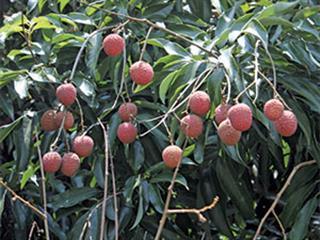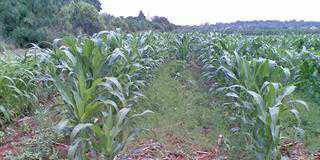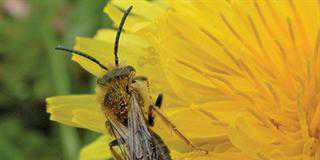
Leaf analysis is the only way you can come up with sensible fertilisation for a specific planting. The following are important:
- The correct time for sampling is from mid-September to mid-November;
- The correct leaf must be sampled (see figure inset above);
- The first leaf sample of a specific orchard must be accompanied by a soil sample, and represent a planting of not more than 3ha;
- The sampling method is important: select approximately 20 healthy trees randomly distributed throughout the orchard. They must be of homogeneous appearance and represent the average trees in the orchard. Do not take samples from obviously good or weak trees. Sample four leaves per tree.
The correct quantities
Fertiliser should be applied about a year after transplanting. Broadcast it evenly about 0,2m from the stem to 0,5m outside the drip area of the tree. Irrigate lightly immediately after fertiliser application. Do not work the fertiliser into the soil. As soon as the trees are established and start growing, apply the fertiliser regularly according to the quantities given in the table (per tree):
Nitrogen (N)
- Year one: Divide it into eight equal monthly applications of 25g each and apply during summer (September to April);
- Year two to year five: Divide into five equal applications from September to April.
- Year six and beyond: Apply half of the nitrogen fertiliser before flowering and the remainder post harvesting.
Phosphate (P)
Apply the phosphate immediately after harvesting.Potassium (K)
Apply half just before flowering and the remainder after harvesting.
Zinc (Zn) and boron (B)
Apply zinc at least four times a year. The following substances and concentrations are recommended per 100l of water: zinc oxide at 200g, Nitro-Zn at 150ml or Agri-zinc at 50ml.
Spray the trees soon after planting with 100g borax or 75g Solubor/100l water every two years.
Kraal or chicken manure can be used as additional fertiliser at 2kg or 1kg respectively per mature (10-year) tree, spread evenly in the drip area.
When are litchis ripe?
The stage of maturity at which fruit is harvested is one of the key factors that determine the fruit quality at the point of sale.
Litchis do not develop further after picking. The fruit must therefore remain on the tree until quite ripe. Litchis harvested too early have an unattractive colour and a sour taste. Ripe fruit has an average mass of between 21g and 25g each and is ready for harvesting during a normal season. Litchis are packed as loose fruit and all unnecessary twigs or stems must be removed.
Source: Department of agriculture, in co-operation with the ARC.













